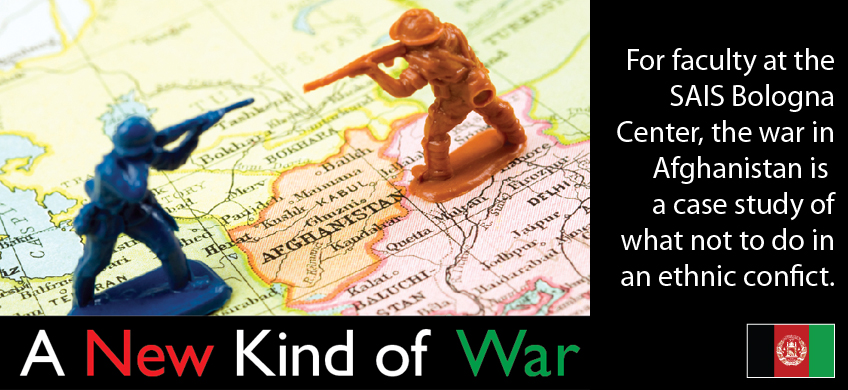
On September 9, 2001, a pair of al Qaeda suicide bombers disguised as journalists triggered a bomb hidden in a video camera, killing Massoud. Two days later, al Qaeda terrorists brought down the World Trade Center and attacked the Pentagon. Vendrell maintains that it is here that the West missed a crucial opportunity. He explains that the whole world knew the Taliban would be toppled for their alliance with al Qaeda, making this an opportunity to install a new Afghan government. Vendrell believes that government should have included the exiled king of Afghanistan, Mohammed Zahir Shah, who had previously tried to introduce democratic reforms before his reign ended in 1973.
That didn’t happen. In October, U.S. and British military forces assisted the Northern Alliance in an offensive that ousted the Taliban. The U.S.
government then threw its support behind some of the same warlords, Vendrell says, “who had destroyed Afghanistan in the 1990s. Now they were brought back to power as ministers, governors, and police chiefs.” Francesco Strazzari, SAIS Bol ’96 (Dipl), adjunct professor of international relations at the Bologna Center and a conflict management specialist, observes that in the aftermath of the successful military campaign, the victors failed to organize a proper peace conference. Instead, they tried to impose a “peace of the winners” that left significant segments of Afghan society—secular and republican factions, for example, and Taliban not linked to al Qaeda—simply defeated and without representation. Strazzari adds that the short-term, pragmatic military decision to bolster militias run by discredited warlords turned into a long-term political strategy.
Why the U.S.-led coalition chose some of the worst candidates to govern is unclear to Vendrell. One possible answer, he says, is that the Bush administration had no interest in nation building and soon became distracted by Iraq. In any case, Vendrell notes, a vital opportunity was squandered. “These windows rarely open twice,” he says.
Another disappointment for Vendrell was that the international community failed in the timing, nature, and scale of an effective peacekeeping operation—another big mistake. The United Nations opted for a “light footprint,” he says, even though the Afghan people were ready for a heavier U.N. involvement in rebuilding the country.
No one thought that would be easy. Peacekeeping is a complicated and fragile process, says Winrich Kühne, a professor of international relations with extensive experience of multinational peacekeeping missions in Africa, the Balkans, and other regions; he worked on the first free and fair elections in South Africa in 1994. Generally speaking, peacekeeping operations enter a conflict zone with the objective of getting antagonists to set enmities aside out of fear, respect, or both. “What you must use is a mix of dialogue, force to create a secure environment, and peacebuilding elements,” Kühne says.
The U.N. Security Council initially sent a “stabilization” mission, called the International Security Assistance Force (ISAF), only into Kabul, neglecting the rest of the country for two years while U.S. and allied troops fought the Taliban and al Qaeda. In 2003, a growing number of troops under the ISAF umbrella began expanding peacekeeping operations beyond Kabul, but by 2006, notes Strazzari, ISAF “peacekeeping” forces were engaged in combat with the Taliban and militias loyal to them in the provinces. Another mistake, says Kühne: “This war violated a well-established lesson that one should not conduct a peace and stabilization operation in parallel [with combat operations]. It also alienated the Afghan population.
